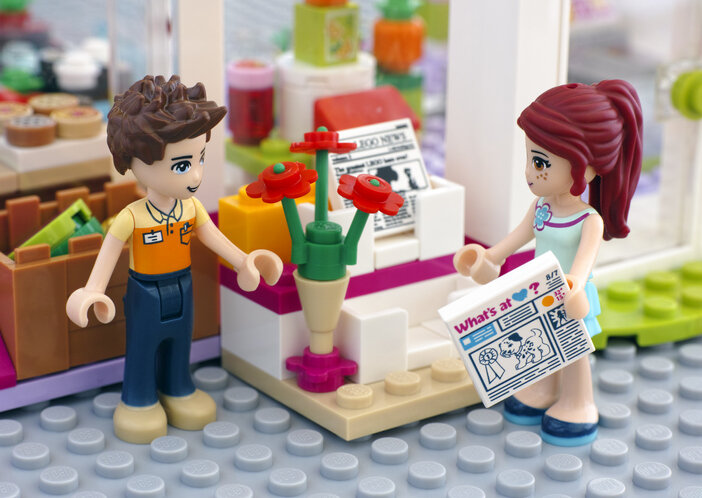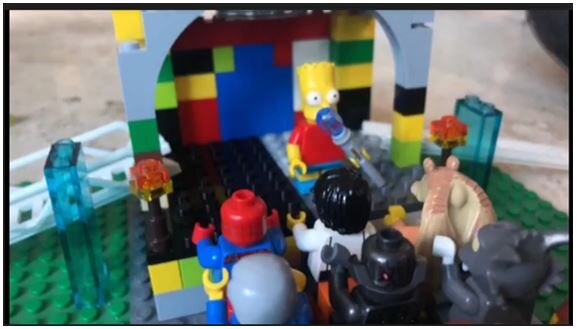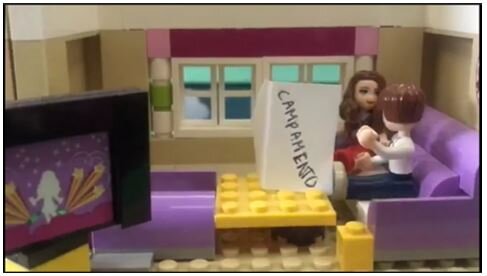“Emotional intelligence and empathy are essential skills that must be an integral part of students’ training.”
Emotions are part of our day-to-day lives; however, it is not always easy to describe or express how we feel. Adolescence is a period marked by many physical and psychological changes, so it is essential to give our students tools to better express their thoughts, feelings, and emotions. Writing and telling stories can contribute to students’ emotional well-being. Every narrative contains characters who solve problems with strategies and actions that students can relate to their personal lives (Geres, 2017). Through technology and storytelling, we can create videos in class in a playful and didactic way that promotes their positive emotions and develops their emotional intelligence.
At the Prepa Tec Morelia campus in Mexico, we designed an activity where students made a stop motion video (or animation volume by its name in Spanish). They related a story or personal experience, reminiscing about pleasant and happy moments when they felt fulfilled and complete. They recreated the scenes using various static objects through videos that they recorded with an app on their cell phones or tablets. They later shared their video productions with their peers. Stories are a useful tool for learning, but they also help heal and promote positive attitudinal changes in students, especially when they switch from being a “listener” to being a “speaker” actively telling stories.
“Creating volume animations in class develops artistic, creative, and technological skills in students. It helps the student make an effort, evaluate himself, monitor his steps throughout the process, and check if his video works.”
According to positive psychology, savoring the future is a broad concept that helps a person imagine how visualized itself in the short and long term; it is a way to work with emotional intelligence and positive emotions (Pawelski 2016). Savoring (to savor happy moments) and reminiscence (to remember the good times) are closely correlated with desirable outcomes that include higher rates of well-being or happiness (Kurtz 2017).
Didactic videos using stop motion
Stop motion is a technique that involves giving movement to static objects through photographs. Rigid, three-dimensional objects are used; for example, toy blocks to build various things, dolls, furniture, food, and even people. The motion is constructed photograph after photograph by manipulating the object between shots. The work involved in making a stop motion video is an artistic and manual procedure that requires a camera and patience because each photograph must have a slight modification to create the movement: the smaller that modification, the more realistic the animation.
In the educational field, creating a stop motion video helps the students strive and evaluate themselves. Throughout the creative process, they double-check their steps to see if the video is working. Through these kinds of animations in class, students develop artistic, creative, and technological competencies.
To create stop motion videos, we can download user-friendly apps to our cell phones, such as StopMotion Studio and SilentFilm Studio, which were the ones we used in class for this project. They are complete applications because they contain an integrated photo and sound editor. Students have to manipulate the objects slightly to create the story so that others can understand the message they want to convey. Each photo is taken step-by-step, and, in the end, all the scenes are joined automatically to create the video.
Reminiscence is very powerful when we tell stories embedded in a deep part of our identity. We tell stories about what happened to us as children, things that happened to us last year, or that we experienced just a few days ago (see image 1). This activity with positive thoughts increases the intensity and valuation of these memories and experiences in students. This action is called savoring, and it promotes valuing the present in the individual.
Image 1: Scene from a student’s video describing a special moment in their life.
As a first step, students made what we call a Story Movement Map (see Image 2) consisting of two parts:
Part 1. Each student decided on the video’s composition, the characters, the analysis of the feelings experienced, and the obstacle(s) faced.
Part 2: With the information in Part 1, the students wrote the script that includes a beginning, development, and outcome; to subsequently move on to making their videos by using the applications mentioned above.
Image 2: Story map to create the video script: Composition, characters, emotions, obstacles: Beginning, Story Development, Denouement (outcome) to yield positive feelings.
Students could use the objects they considered the best suited to recreate the story. These included action figures, toys, plastic models, clay models, or whatever they had around the home and suitable for the video. This freedom in choosing material allowed them to reinforce their reminiscing. Many of them used toys from their childhood to recreate their story, making it easier to recall pleasant moments from their past (see image 3).
Image 3: Scene from a student’s video describing a special moment in their life.
Finally, during a class session, students shared their voluntarily. As they projected, the student gave a brief introduction to the video; it played and closed, commenting on how remembering that stage of life felt. As it closed, in the full class session, all the students had the opportunity to share how they felt doing the activity. Last, they delivered an individual reflection and explained why they selected that moment, how they felt remembering it, and their opinion on the activity as a whole. We share one of the student videos here. This project involved 240 first, second, and fifth-semester students at the Prepa Tec high school campus in Morelia, Mexico, studying the subjects “Tutoring” and “Integral Well-being.”
Reflection
Through this project, we seek to support the efforts made at Prepa Tec to promote students’ emotional intelligence through the RULER program at Yale University, headed by Doctor Marc Brackett, and the program TQueremos from the Student Leadership and Training (LIFE) area, thus fostering a better institutional environment.
Among the new skills required in education for the future are emotional intelligence and empathy. Tec de Monterrey promotes emotional intelligence as an integral part of student training. It prepares its graduates to face the challenges that many have called Industrial Revolution 4.0, which describes the global changes that impact present and future education.
We invite you to work with your students to create stop motion videos to develop transversal skills and competencies and help them become aware of their emotions and those of others.
About the authors
Arlette Audiffred (arlette.audiffred@tec.mx), Fernando Pantoja (fernando.pantoja@tec.mx), Lizbeth Hernández (lizbeth.hernandez@tec.mx), and Tzihueriti Castillo (tzihueriti@tec.mx) are teachers at Prepa Tec, Campus Morelia. They teach the subjects Tutoring and Integral Well-being. They have participated in several educational innovation projects through the NOVUS fund, including the CIIE 7th Congress of Educational Innovation at Tecnológico de Monterrey.
Edited by Rubí Román (rubi.roman@tec.mx) – Observatory of Educational Innovation.
Translation by Daniel Wetta.
This article from Observatory of the Institute for the Future of Education may be shared under the terms of the license CC BY-NC-SA 4.0 
)
)




)